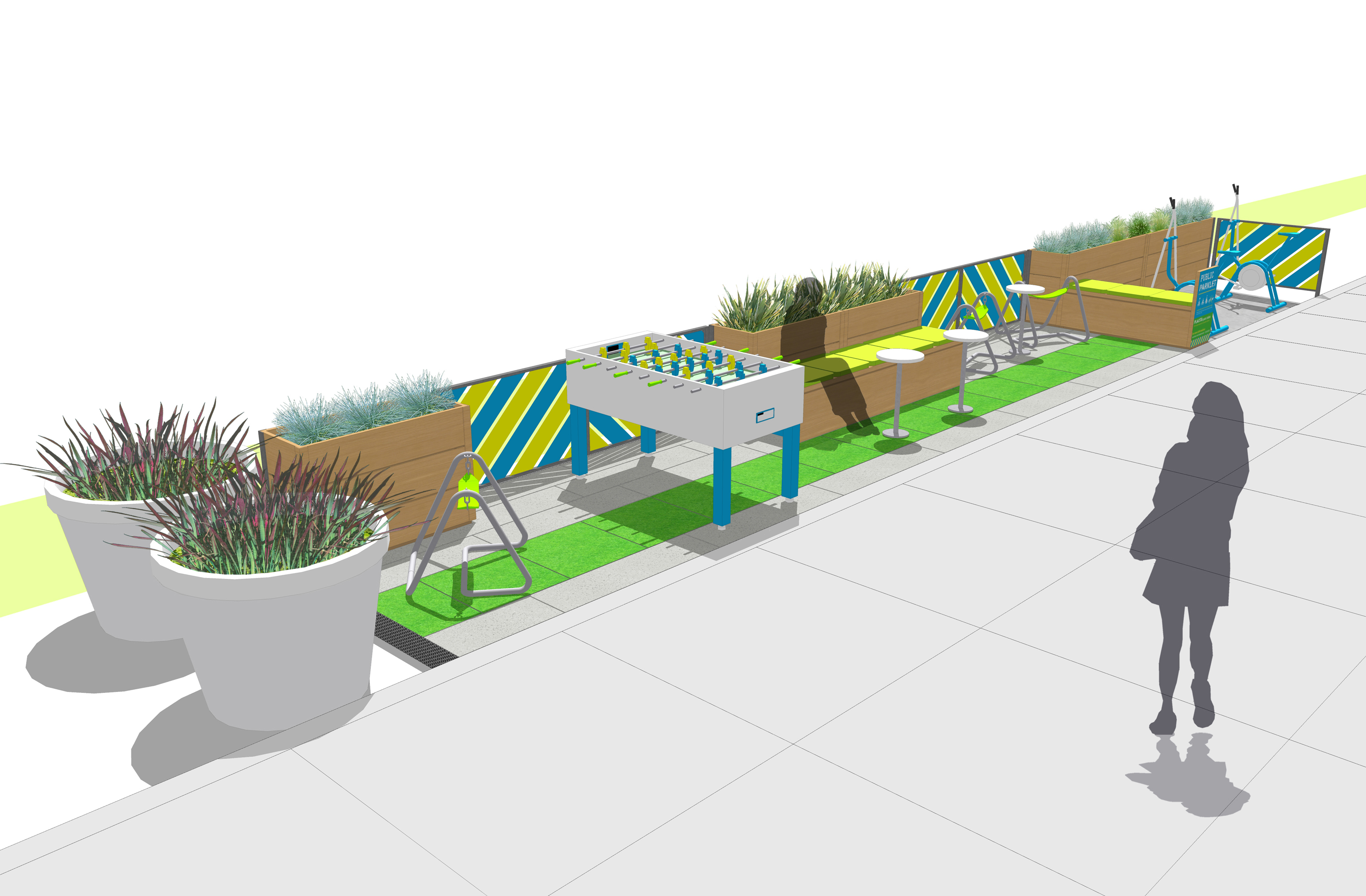Students roaming the streets of downtown Los Angeles this fall may notice clusters of tables, chairs, bike racks and greenery sprouting up in place of parking meters and asphalt.
The Los Angeles City Council approved the addition of the first four downtown parklets ““ or miniature streetside parks ““ in Los Angeles late last month. Two of the approved parklets will be designed, constructed and funded by the UCLA Complete Streets Initiative, a street planning project within the UCLA Luskin School of Public Affairs. The initiative was also responsible for researching the history of “pocket parks” and presenting their findings to interested council members.
The parklets will take the place of about two parallel parking spots each and have seating and bike racks.
Parklets are already common in major cities worldwide as officials attempt to make streets greener and more accessible to pedestrians, said Madeline Brozen, program manager of the UCLA Complete Streets Initiative. San Francisco currently has about 30 within its city lines, she said.
Los Angeles’ parklets first became a possibility in December when the Complete Street Initiative received a $75,000 grant from the Rosalinde and Arthur Gilbert Foundation, which promotes various health initiatives in the state.
Using a portion of the grant, a team of graduate student researchers and faculty created a parklet tool-kit that studies cities across the United States and Canada that have parklet programs. It also provides guidelines for planning, constructing and maintaining parklets in Los Angeles and other communities.
The UCLA Complete Streets Initiative will use about a third of the grant money to construct the two new parks, located on Spring Street in downtown Los Angeles.
The parklets will be the first in the nation to include outdoor athletic equipment, such as elliptical machines. The more obvious emphasis on health and fitness was requested by the Gilbert Foundation as a means to fight diabetes ““ a disease the foundation is dedicated to preventing, Brozen said.
After they are constructed in the fall, the parks will undergo a six month trial period. City leaders will then determine if the parks are safe and can be successfully maintained by the downtown business improvement district, according to a statement from the Luskin School released last week.
If the pilot program is successful, members of the Complete Street Initiative hope city leaders will approve an expansion of the project, Brozen said. An expansion could mean numerous parklets will pop up around Los Angeles, possibly including Westwood Village, she said.
“I would definitely love to see a program like this (in Westwood),” said Eric Norton, a spokesman for the Westwood Village Improvement Association. “We are pretty urban and it would be nice to see some open space.”
If the community expresses interest in incorporating the pedestrian-friendly parks into the Village, city officials would be open to the idea as well, said Paul Neuman, a spokesman for Councilmember Paul Koretz, who oversees the Westwood area in his jurisdiction.
But the scarcity of parking in Village will need to be addressed before any plans can move forward, Norton said.
“The opportunities are really endless,” Brozen said. “A lot of areas have a deficit of open space and hopefully we’ll get to the point where there is an overwhelming demand for parklets (in Los Angeles).”
